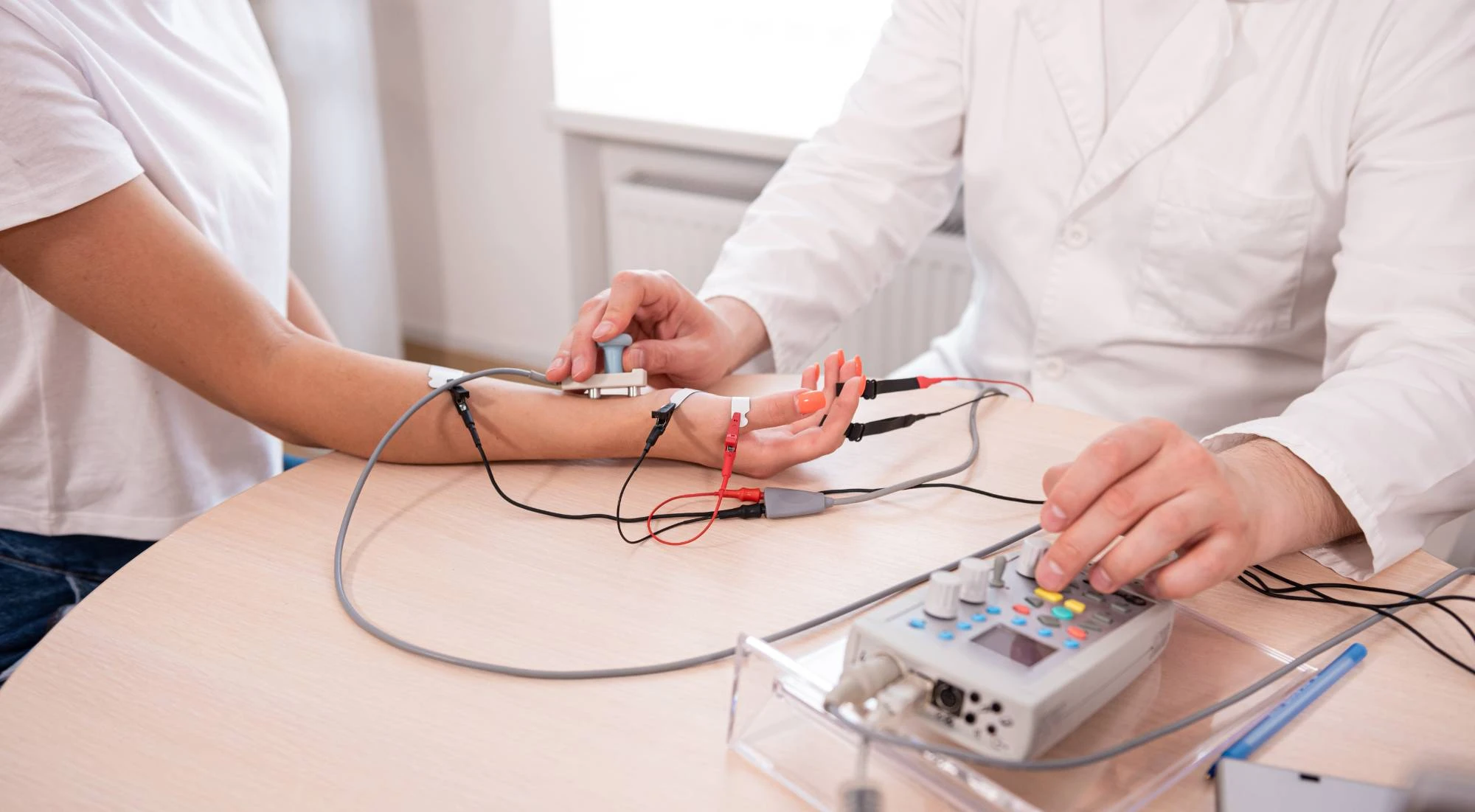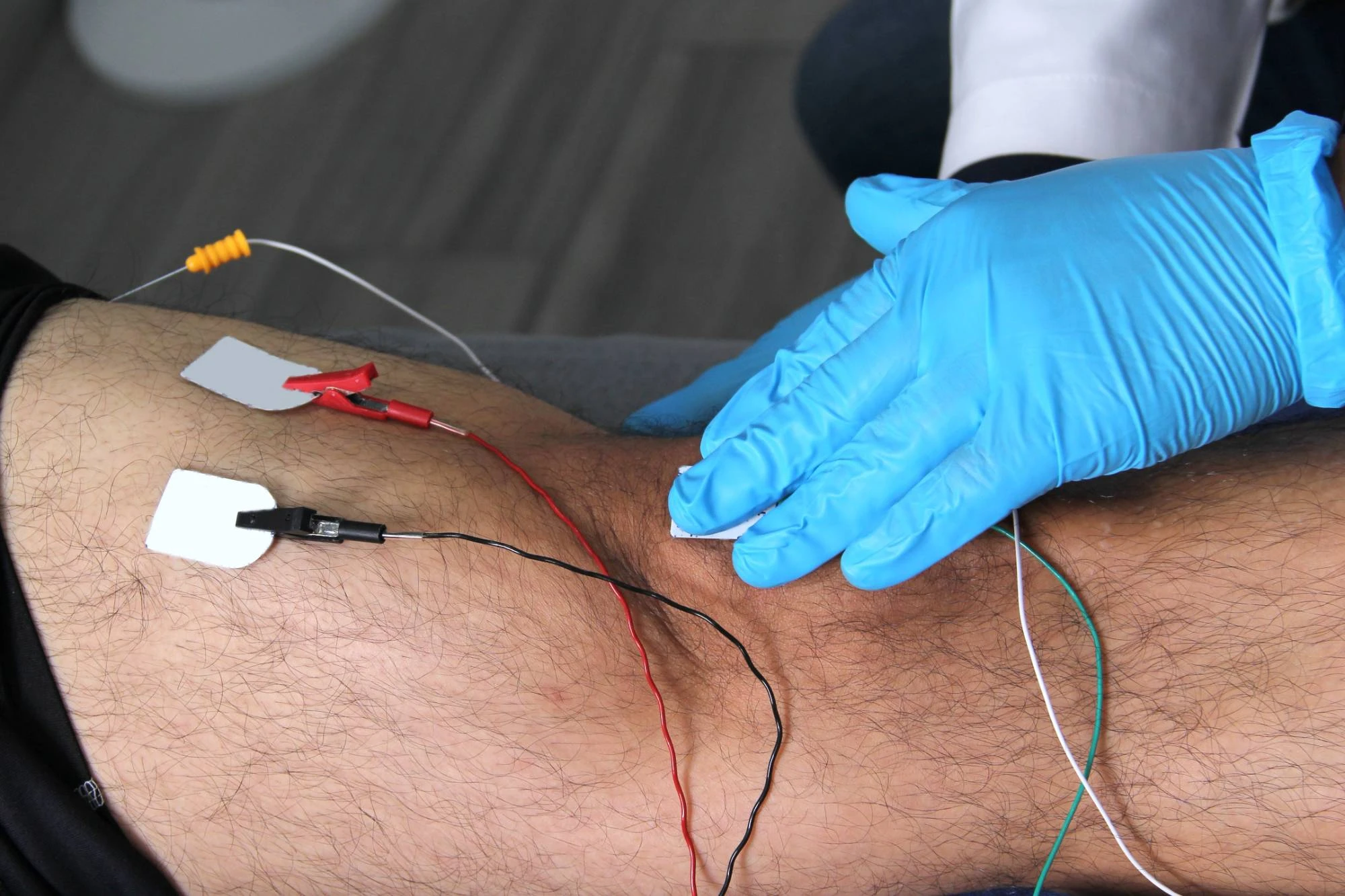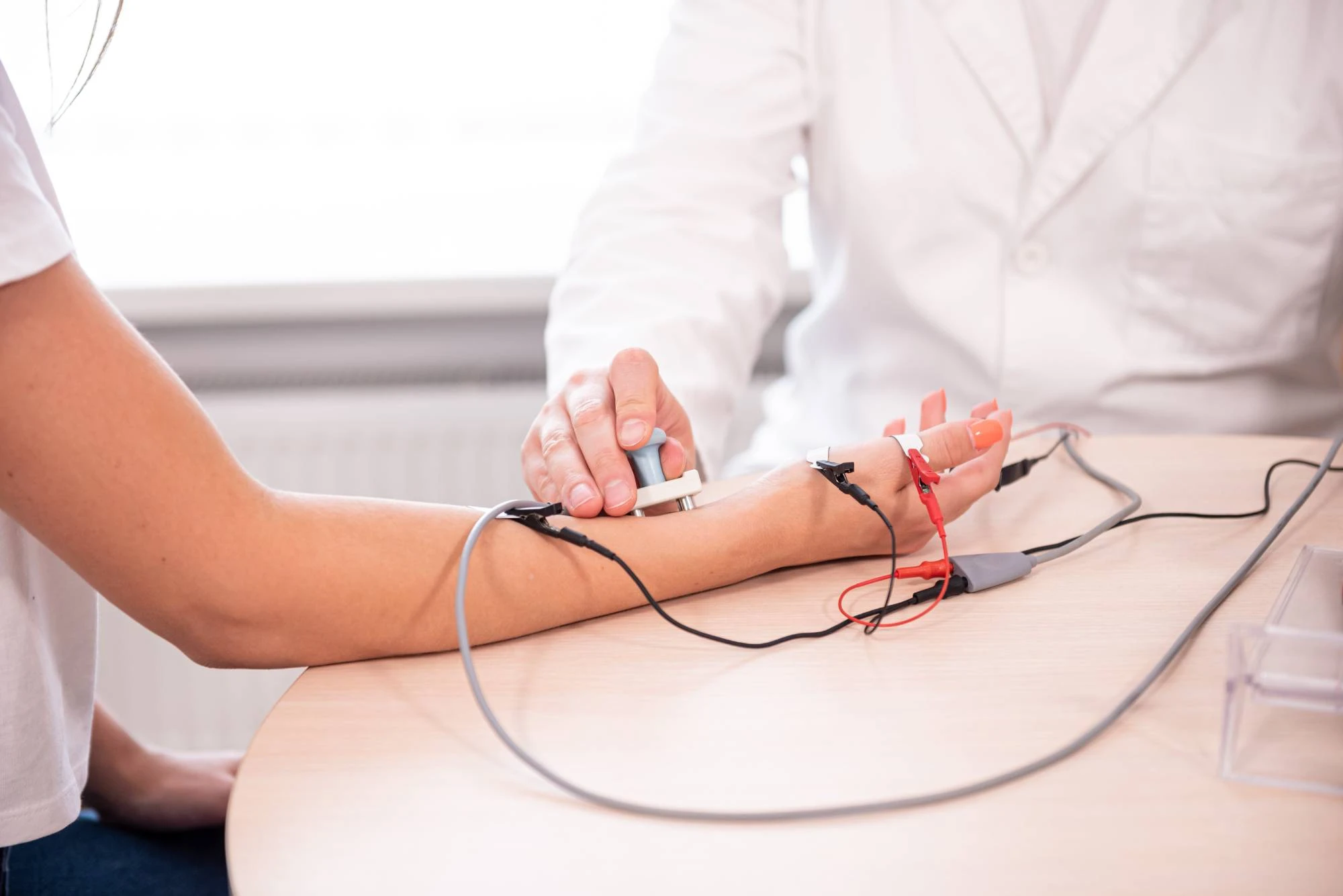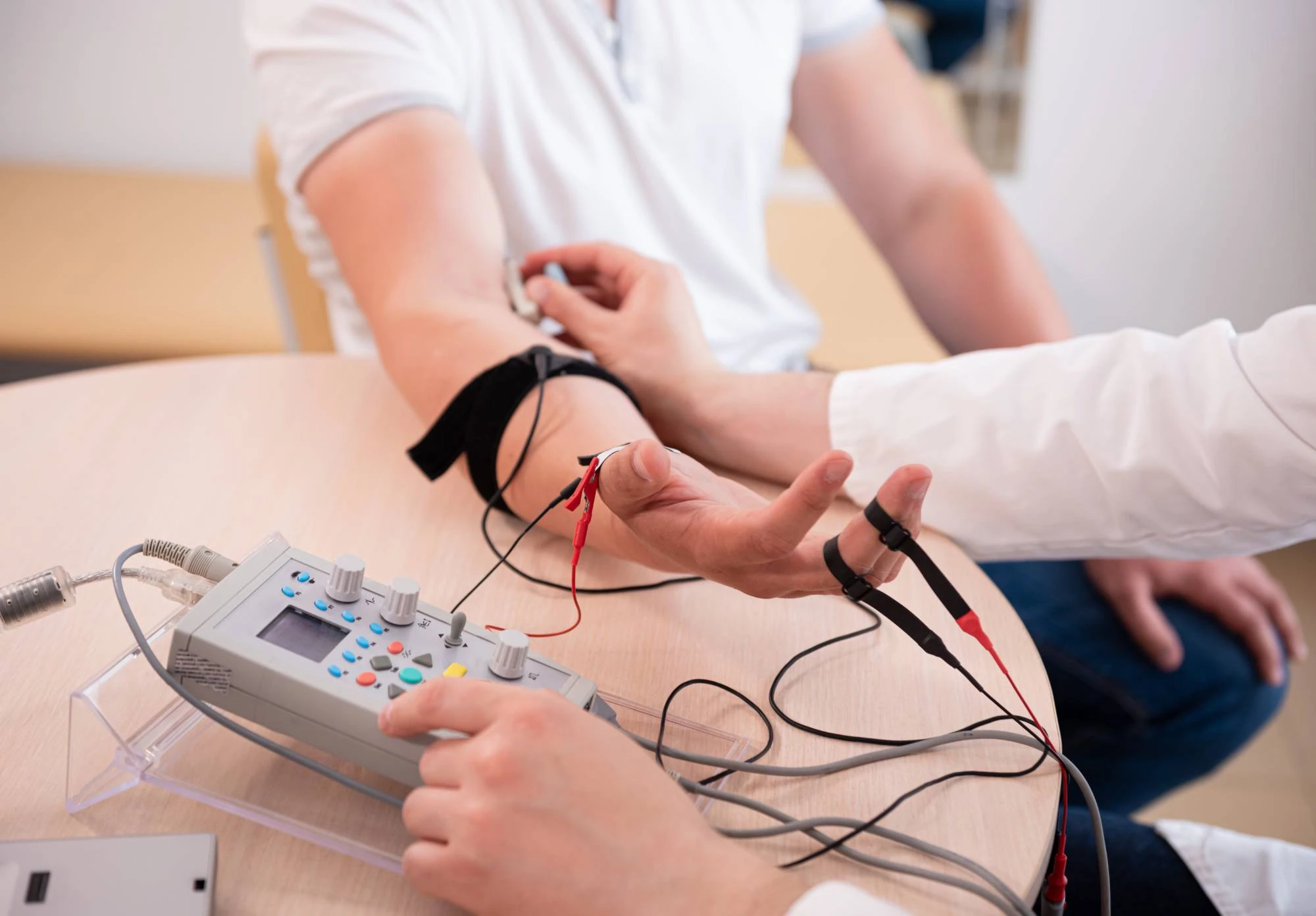Precise EMG testing that identifies exactly what’s causing your numbness, tingling, or muscle weakness.

Reviews

You’ve been dealing with symptoms that don’t make sense. Numbness in your hands that comes and goes. Muscle weakness that’s getting worse. Tingling that keeps you awake at night.
EMG testing gives you the clarity you need. Instead of guessing about what’s causing your symptoms, you get precise measurements of how your nerves and muscles are actually functioning.
The test identifies exactly where nerve damage or muscle problems are occurring. You’ll know if it’s carpal tunnel, a pinched nerve, muscle disease, or something else entirely. That means your doctor can create a treatment plan that actually addresses your specific condition instead of treating symptoms blindly.
NY Spine Medicine has been providing diagnostic testing and spine care to Brooklyn residents for years. Our team understands that getting an EMG test often comes after months of unexplained symptoms and frustration.
We focus specifically on nerve and spine conditions, which means we see these symptoms every day. We know what questions to ask, what to look for during testing, and how to explain results in terms that actually make sense.
Located right in Cobble Hill, you don’t need to travel to Manhattan or deal with hospital wait times to get the testing you need.

The EMG test has two parts: nerve conduction study and electromyography. First, small electrodes are placed on your skin over the nerves being tested. You’ll feel brief electrical pulses that measure how fast and strong your nerve signals are.
Next comes the EMG portion. A thin needle electrode is inserted into specific muscles to measure electrical activity. Yes, there’s some discomfort, but most patients say it’s less painful than they expected.
The entire test usually takes 30 to 60 minutes depending on which nerves and muscles need testing. You get results immediately, and we explain what the findings mean for your specific situation. You’ll leave knowing exactly what’s happening with your nerves and muscles.

Ready to get started?
The EMG testing at NY Spine Medicine includes both electromyography and nerve conduction studies in one appointment. You’re not just getting basic testing – you’re getting comprehensive evaluation of nerve and muscle function.
We test for conditions like carpal tunnel syndrome, pinched nerves, sciatica, peripheral neuropathy, muscle diseases, and nerve injuries. We use advanced diagnostic equipment that provides precise measurements your doctor needs for accurate diagnosis.
Most insurance plans cover EMG testing when medically necessary. Our staff handles insurance verification and helps with any billing questions so you can focus on getting the answers you need about your health.

New York:
Florida:
Support